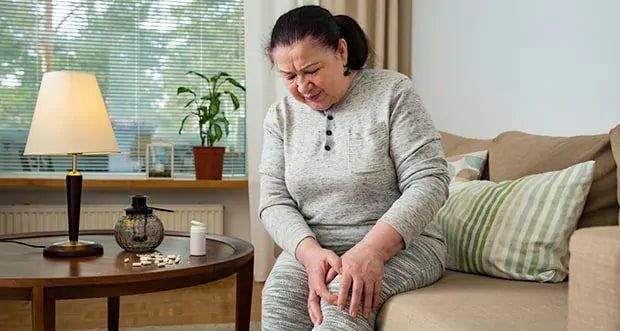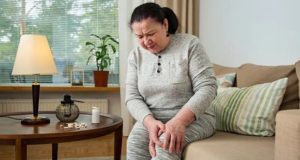
 Women are at a higher risk of osteoporosis especially during menopause. Read here as expert explains what exactly increases the risk and how can women ensure healthy bones for lifetime.
Women are at a higher risk of osteoporosis especially during menopause. Read here as expert explains what exactly increases the risk and how can women ensure healthy bones for lifetime.
Women are at a significantly higher risk of bone-related issues including osteoporosis. This condition largely affects women during and after menopause. Bone is like a tissue in the body that can break down and can be replaced. An imbalance between this bone formation, absorption or reabsorption affects the bone density and causes osteoporosis. It makes the bones brittle, fragile and painful when lifting weights. Osteoporosis increases the risk of fractures and bone-related injuries. In severe cases, even a cough or sneeze can lead to a fracture.
Taking care of bones during and after menopause
Why women are at a higher risk?
Humans attain maximum bone density between the ages of 25-30, after which there is a slow and steady loss of bone especially after the age of 40. In women, this loss of bone is accelerated with certain hormonal disturbances due to thyroid issues or menopause.
Women also have a smaller bone frame compared to men which lessens the total bone mass, making them more prone to osteoporosis.
Increased incidence of osteoporosis has also been reported in single women who have not had pregnancy or breastfeed a child. Women who are involved in sedentary and stressful lifestyle have also reported higher risk. Along with this, eating disorders, fad diets, high caffeine intake, smoking and alcohol consumption made the situation worse.
How to take care of bones during and after menopause?
The best way to prevent osteoporosis post menopause is by building up your total bone calcium or bone mass till the age of 35. It will slow down the bone loss process once menopause starts. Here’s how you can do that-
1. Diet-
If you see the structure of bone it consists of a base or matrix of protein in which calcium is imbedded as a mineral. So, you must ensure an adequate protein intake along with a good calcium intake of approximately 1000-1200 milligrams a day. Along with the calcium, one must ensure adequate vitamin D consumption too, either by exposure to sunlight or by taking supplements in the right doses. This ensures the ideal raw materials to build bone.
Calcium is an essential part of the diet. Till the age of 50, women should consume 1000 milligrams per day. Beyond the age of 50, the requirement goes up to 1200 milligrams per day and that is what should be targeted much against the myths that calcium causes stones, bloating and weight gain. One should add enough dairy, dark green leafy vegetables and soy products to the diet. Also, keep a check on your vitamin D levels to ensure better absorption of calcium consumed from your diet.
2. Exercise-
Other than diet, exercise is also important to allow the protein and calcium consumed to be taken up by the bone tissue. Exercise keeps the bone strong and strengthens the muscle and at the same time will prevent falls and subsequent chances of fragility chances in women.
The best form of exercise to strengthen bones and muscles together is strength training using progressive resistance. It can be bodyweight exercises or some kind of resistance training like with bands or Pilates where the bones and muscles are put under a constantly increasing strain. Even certain types of cardio like skipping, jogging, walking and stair climbing where there is some kind of stimulus to the bony skeleton are effective. However, low impact cardio like swimming or cycling is not so effective for your bones. Exercise three times a week for at least 30-45 minutes for healthy bones.
Now we know the preventive measures for osteoporosis, the same principles apply for post-menopause bone health. Post-menopause, adequate calcium intake, vitamin D supplementation, good protein intake along with exercise will prevent further deterioration of the bone mass and incidence of osteoporosis.
In cases with established osteoporosis, diagnosed by the DEXA scan or home density test there are special drugs that can be used to reduce the fragility of the bone in post-menopause hormone therapy. But it should be done under proper guidance






